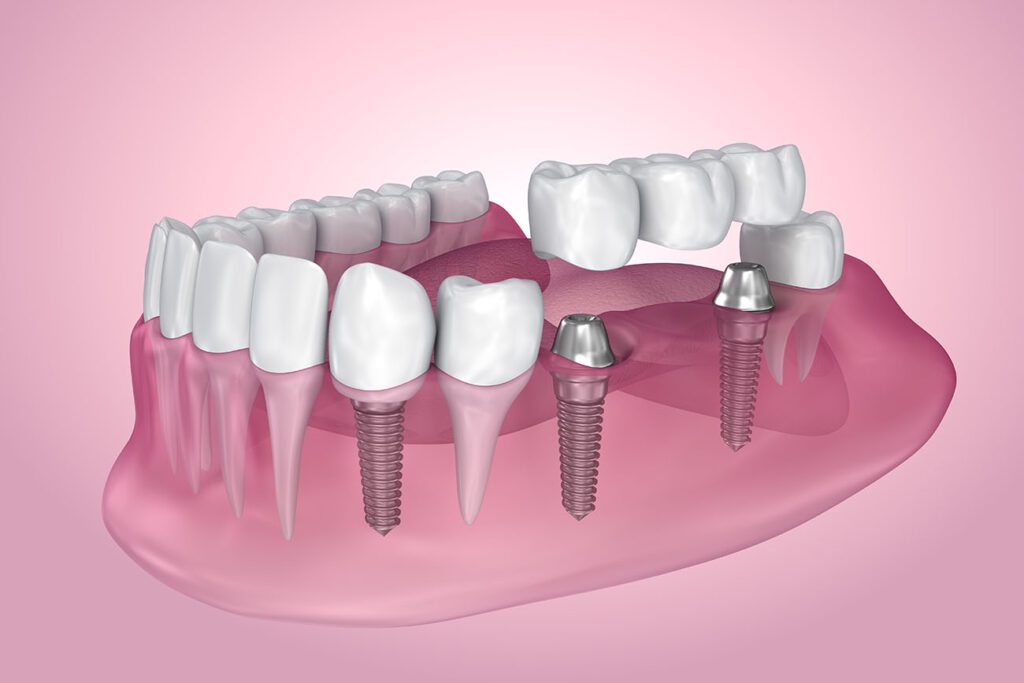When you’re missing teeth, your entire oral health could be at risk. Tooth loss can lead to worsening conditions such as jaw disorders, facial sagging, and teeth shifting. With a dental bridge in Dallas, TX, many patients can restore their bite after losing one or multiple teeth. But there are different types of bridges to consider when seeking treatment. After examining your mouth and discussing your cosmetic goals, your dentist can help you determine which type of bridge is right for you.

Choosing the Right Dental Bridge in Dallas, TX
Picking out the right restoration is crucial if you want to maintain your oral health. While your dentist can recommend an option based on your bite, the final decision is ultimately yours. Understanding the difference between the two types of bridges can help you make your choice. A traditional bridge uses dental crowns on your neighboring teeth to support your fake teeth (known as pontics). An implant-supported bridge, however, uses dental implants with crowns to support your pontics.
Here are the factors to consider when picking out your dental bridge.
Number of Missing Teeth
How many teeth you’re missing in a row will greatly impact your decision. If you’re only missing one or two teeth, then a traditional bridge can be a great way to restore your bite. However, if you’re missing more than three teeth, however, a traditional bridge may not be the best option. The more pontics you have in a bridge, the more pressure there is on your supporting teeth every time you bite. Over time, this amount of pressure could cause damage to your supporting teeth. For this reason, an implant-supported bridge or partial denture is often recommended for restoration.
Jaw Strength
When getting dental implants, it’s important that you have a strong jaw with high bone density. Otherwise, your implant could fail to integrate properly. If you have a loss of bone density due to tooth loss, then you may not be eligible for dental implants. In these cases, your dentist may recommend either getting a bone grafting appointment first or choosing a traditional dental bridge for treatment.
Cost
Generally speaking, an implant-supported bridge is likely to cost more than a traditional bridge. While many dental offices offer payment plans or accept third-party loans (such as through CareCredit), an implant-supported bridge may not be a viable financial option. Some patients may choose to get a traditional bridge or a partial denture to support their bite while saving for implants.
If you’re missing teeth, the sooner you get treatment, the better. Waiting too long for restoration could lead to worsening dental conditions. Call our office today at 214.216.6577 to schedule a consultation and learn more about dental bridges and implant dentistry.
